Road To Recovery Playbook Update | Weekly Market Commentary | March 30, 2020
Stocks soared last week, working off historically oversold levels. Although the impact to our economy and American workers has been devastating, we did see some positive developments from monetary and fiscal stimulus, which could set up a powerful eventual economic rebound. This week, we share an update on our Road to Recovery Playbook, as we have seen more signs of a major low in equities. We have upgraded our equities recommendation to overweight from market weight where appropriate.
WHERE WE ARE
The COVID-19 pandemic continues to significantly and negatively impact the global economy, making this crisis one of the worst we have ever faced. In addition to the tragic human toll, containment measures have further elevated near-term uncertainty for investors. As horrible as things have been, there is light at the end of this dark tunnel.
Since we rolled out our Road to Recovery Playbook two weeks ago to help gauge the stock market’s bottoming process, there have been several steps in the right direction, and we’ve just checked off two more of the signals we were watching. Markets had already priced in a recession (#3), and various sentiment and technical indicators suggested a limited number of sellers remained (#4) [Figure 1]. Last week, we gained visibility into how bad this recession could be (#2), along with policy responses that have helped restore investor confidence (#5). Unfortunately, we don’t yet have evidence of a peak in new COVID-19 cases in the United States (#1) – the baseline of our playbook – but models based on the trajectories of other countries suggest this could come within a week or two.

RECESSION ARRIVES
Although a few weeks ago it appeared we could avoid a recession, the economic data last week unfortunately confirmed a significant contraction in the US economy, allowing us to check off #2 in our Playbook.
Jobless claims saw a historic spike, as 3.3 million people filed new claims for unemployment benefits in the week ending March 21, almost five times the previous all-time high of 695,000 set in 1982. This is devastating for so many Americans, and unfortunately, we don’t see this trend changing anytime soon [Figure 2].
Although the number of new claims is extraordinary, it wasn’t entirely unexpected. The United States and countries across the globe have shut down entire segments of their economies in an effort to delay or mitigate the impact of the COVID-19 pandemic. Many of the jobs most impacted by social-distancing measures, such as cashiers, restaurant workers, and hotel staff, are in the services sector, which now makes up about 80% of US jobs.
Jobs are likely to return quickly once the economy gets going again, but we know the timing of that is uncertain. Until then, backstops from federal programs and support for businesses to help minimize further layoffs will be essential for millions of Americans.
Further proof of how quickly the services sector has been impacted came from Markit’s US services flash Purchasing Manager’s Index (PMI) in March, which fell a record 10.3 points to 39.1, the largest contraction since the data series started in October 2009. Not surprisingly, travel, tourism, and other consumer industries were most impacted.
Importantly, economic data is backward looking and slow moving, while our economic reality has been changing at an unprecedented pace. The bottom line is that we have clarity we are indeed in a recession, and the near-term impact will be severe.

POLICY RESPONSE HAS BEEN MASSIVE
The roughly $2 trillion fiscal plan stimulus package was approved by both the Senate and the House and was signed by President Trump. This allows us to check off signal #5 in our Playbook.
Some of the highlights of the fiscal plan include direct payments of $1,200 per taxpayer (phasing out on higher incomes) and $500 per child. These payments are expected to begin within weeks, helping those impacted by the layoffs. Additionally, the Federal Reserve (Fed) is setting aside $425 billion to leverage into loans to distressed companies and another $75 billion for some of the hardest-hit industries. The historic package also extends unemployment benefits, delays the April 15 tax deadline by three months, aids the stressed healthcare system, and helps plug budget gaps for state and local governments.
Turning to monetary policy, the Fed has gone all in to provide a backstop to limit the economic fallout. They’ve dusted off many parts of their 2008–09 financial crisis playbook, but they’ve also brought out some new crisis fighting tools. Besides cutting interest rates back to zero, they announced open-ended asset purchases, or quantitative easing, which is being dubbed “QE infinity.”
Along with buying US Treasuries and mortgage-back securities (MBS), the Fed is now purchasing corporate debt, including bonds packaged in exchange-traded funds, and commercial MBS to help mitigate disruptions and establish free flow of credit to consumers, businesses, and state and local governments. Other historic moves include short-term loans to push cash into money markets, unprecedented bridge loans to large companies, a Main Street lending program, loans to municipalities, a commercial paper funding program, and multiple other programs.
This combination of monetary and fiscal policy is unpreceded. Although it won’t help all of the immediate needs of Americans most impacted by this horrible pandemic, it will help cushion the blow for many. But the real benefit may not be seen until the second half of this year, after the virus has most likely been contained and growth comes back.
OUR TAKE
Although we don’t have clear sight into a peak in the number of COVID-19 cases yet, we do see enough evidence that suitable investors, where appropriate, may want to consider adding equities.
We believe stock prices have fallen to levels we would consider very attractive based on our assessment of intermediate-term economic and market fundamentals. For this reason, we have upgraded our equities recommendation in suitable strategies to overweight from market weight, as we continue to follow our Road to Recovery Playbook to gauge progress on the market’s bottoming process.
We will continue to keep you updated on our views on the economy and markets as this challenging situation develops. Everyone stay well.
Click here to download a PDF of this report.
IMPORTANT DISCLOSURES
This material is for general information only and is not intended to provide specific advice or recommendations for any individual. There is no assurance that the views or strategies discussed are suitable for all investors or will yield positive outcomes. Investing involves risks including possible loss of principal. Any economic forecasts set forth may not develop as predicted and are subject to change.
References to markets, asset classes, and sectors are generally regarding the corresponding market index. Indexes are unmanaged statistical composites and cannot be invested into directly. Index performance is not indicative of the performance of any investment and do not reflect fees, expenses, or sales charges. All performance referenced is historical and is no guarantee of future results.
All information is believed to be from reliable sources; however LPL Financial makes no representation as to its completeness or accuracy.
Please read the full Outlook 2020: Bringing Markets Into Focus publication for additional description and disclosure.
This research material has been prepared by LPL Financial LLC.
Securities and advisory services offered through LPL Financial (LPL), a registered investment advisor and broker-dealer (member FINRA/SIPC). Insurance products are offered through LPL or its licensed affiliates. To the extent you are receiving investment advice from a separately registered independent investment advisor that is not an LPL affiliate, please note LPL makes no representation with respect to such entity.
If your financial professional is located at a bank or credit union, please note that the bank/credit union is not registered as a brokerdealer or investment advisor. Registered representatives of LPL may also be employees of the bank/credit union. These products and services are being offered through LPL or its affiliates, which are separate entities from, and not affiliates of, the bank/credit union.
Securities and insurance offered through LPL or its affiliates are:
Not Insured by FDIC/NCUA or Any Other Government Agency | Not Bank/Credit Union Guaranteed | Not Bank/Credit Union Deposits or Obligations | May Lose Value
Tracking # 1-973424 (Exp. 03/21)
Recent Posts
Navigating Strategic and Tactical Investment Horizons: The Differences | Weekly Market Commentary | March 10, 2025
Earnings Season Recap: Strong Growth, Big Upside, Now What? | Weekly Market Commentary | March 3, 2025
Refinancing ZIRP | Weekly Market Commentary | February 24, 2025
Tariffs Ignite a Metals Melt-Up | Weekly Market Commentary | February 18, 2025
Key Pillars of the Bull and Bear Cases in 2025 | Weekly Market Commentary | February 10, 2025
U.S. Exceptionalism: Is It Still Intact? | Weekly Market Commentary | February 3, 2025
Is the Bond Market Worried About Inflation? | Weekly Market Commentary | January 27, 2025
Categories











